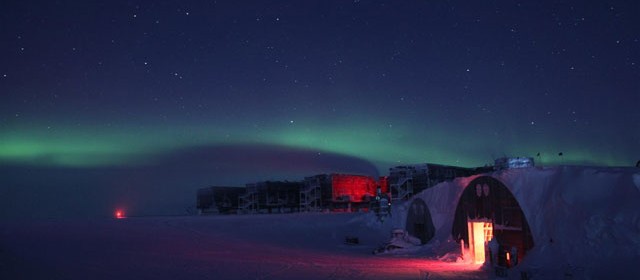The Seasons Of Antarctica

Winter in Antarctica, it is dark all of the time. In the Antarctic summer, (between January and March, when there is plenty of daylight—twenty-four hours a day! In September, the Sun rises, and then doesn’t set again until March.
Why does Antarctica have six whole months of darkness in the winter and six whole months of lightness in the summer?
In most places on Earth, there are daily changes in light—light all day and darkness all night. These daily changes occur because Earth rotates on its axis, spinning once around in roughly twenty-four hours—slow enough so that we don’t get dizzy. For part of that time, the period we call daytime, a given place on Earth, such as your town, faces the Sun. For the remainder of the twenty-four-hour rotation, the period we call nighttime, Earth has turned, and that same area is on the side of Earth facing away from the Sun.
So why do we have changes in daylight over the course of the year?
Annual changes in light patterns are tied to the seasons
There are two reasons that we have seasons.
First, Earth’s axis is tilted.
Second, Earth revolves around the Sun once every 365 days.
Our Earth follows an elliptical path on its journey around the Sun. An ellipse is a slightly flattened circle; this means that there are two extreme points on the orbit, one closest to the Sun and one farthest. (The perihelion is the point where the Earth is closest to the Sun; the aphelion is the point where the Earth is farthest from the Sun.)
You might think seasons are caused by Earth’s changing distance from the Sun, with the closest, hottest point being summer and the farthest, coldest being winter. Not so! In fact, winter in the Northern Hemisphere occurs at the perihelion, when the Earth is closest to the Sun.
It’s not the Earth’s distance from the Sun that causes seasons, then. So what does?
The actual reason for seasons has to do with the tilted angle of the Earth’s axis. No matter how close or far the Earth is to the Sun, it always maintains the same angle on its axis; in other words, it’s always tilted the same way. This means that for part of the path around the Sun, the Southern Hemisphere is tilted toward the Sun, and for part of the path, it is tilted away from the Sun. When it is tilted toward the Sun, the Southern Hemisphere receives a greater amount of sunlight; this occurs in the Antarctic summer. When it is tilted away from the Sun, the Southern Hemisphere receives less sunlight; this occurs in the Antarctic winter.
The seasons occur at opposite times in the hemispheres; when the Southern Hemisphere is tilted toward the Sun, the Northern Hemisphere has to be tilted away from the Sun. Antarctica, in the very bottom of the Southern Hemisphere, gets more sunlight and warmth, experiencing summer, when the North Pole is receiving less light and warmth and experiencing winter. Eventually (about six months later), the North Pole is exposed to the incoming light and warmth of summer, and the South Pole is in the darkness of winter. The amount of sunlight received, then, creates the season; an area of the globe is experiencing summer when it is receiving more sunlight for longer periods.
This is all very nice, you might be saying…. but WHY does Antarctica have such extremely long periods of light and dark?! Why does the Sun rise only once when the Antarctica summer begins and then set only once when the Antarctica winter begins? Why does the summer day and winter night last for almost six months each?
Look again at the drawings of the seasons. During the Southern Hemisphere summer, the Earth is tilted in a way that exposes most of the Southern polar region to the sun’s rays all the time. Even though Earth is rotating daily on its axis, the bottom of the Earth is always tilted toward the Sun. Six months later, at the other end of Earth’s yearly revolution around the Sun, the tilt of the Earth’s axis causes the Southern Hemisphere to tilt away from the Sun all the time. Now, even though the Earth is rotating daily on its axis, the bottom of the Earth is always tilted away from the Sun. At this time, the South Pole gets no sunlight, while the North Pole soaks up twenty-four hours a day of sunlight.
At latitudes greater than 6633′, the position of the Arctic and Antarctic circles on our globe, days of constant darkness or light can occur. (The South Pole is at 90S.) Much of Antarctica lies between 6633′ and 90S. As you get farther from the Pole, there are increasing (but still very short) periods of sunlight during winter and darkness during summer. Only the Antarctic Peninsula, sticking out north of ~66S, does not experience twenty-four-hour days in summer or twenty-four-hour nights in winter. (This might help explain why flowering plants are found only on the Peninsula.) But even at the Peninsula, the lengths of summer days and winter nights are vastly exaggerated compared to what most of us experience at home in lower latitudes.

 Print
Print